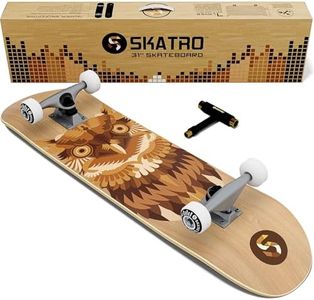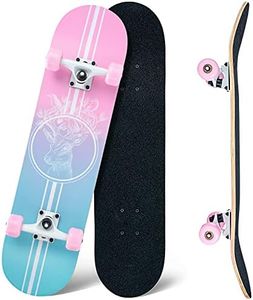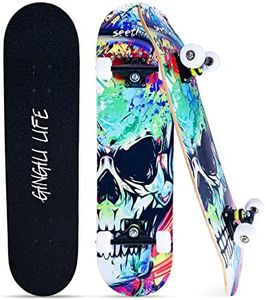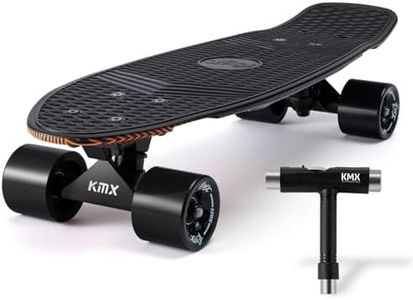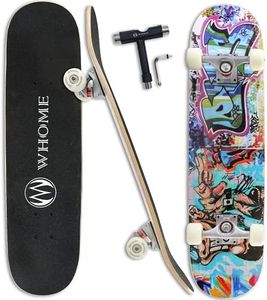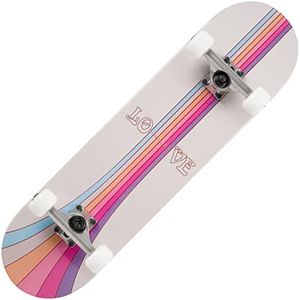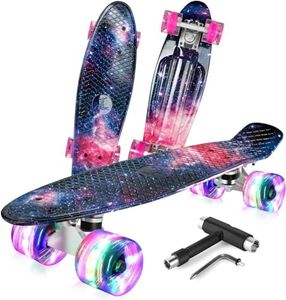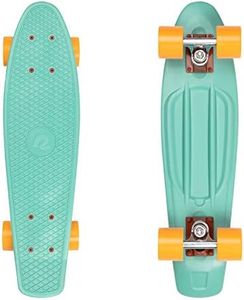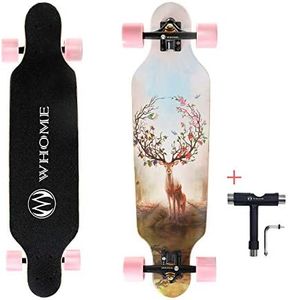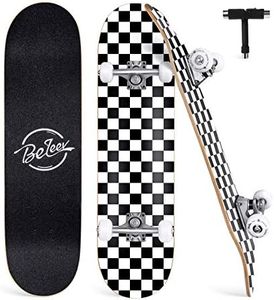We Use CookiesWe use cookies to enhance the security, performance,
functionality and for analytical and promotional activities. By continuing to browse this site you
are agreeing to our privacy policy
10 Best Skateboard For Adults
From leading brands and best sellers available on the web.By clicking on a link to a third party's website, log data is shared with that third party.
Buying Guide for the Best Skateboard For Adults
Choosing a skateboard as an adult can be a fun process, but it's helpful to understand what makes one board different from another. The right skateboard depends on your experience, riding style, and where you plan to use it—whether that's for commuting, tricks, or cruising around town. Knowing the basics about parts like the deck, wheels, trucks, and more will make it easier to find a board that feels comfortable, performs well, and motivates you to get out and ride.Deck Size and ShapeThe deck is the flat board you stand on when riding. Adult skateboards usually come in a width range from around 7.5 to over 8.5 inches. A wider deck gives you more stability and control, which is great for cruising or if you have larger feet, while a narrower deck is lighter and flips more easily, making it popular for tricks. If you want to skate at the park or do technical tricks, a smaller, lighter deck might suit you. If you're mainly cruising or commuting, or if you want more space under your feet, go for a wider deck.
Wheel Size and HardnessWheels come in different diameters (measured in millimeters) and hardness (measured on the durometer scale). Smaller wheels (50–54mm) are slower and better for technical tricks, while larger wheels (55–60mm or more) help with speed and smoothing out rough roads, making them ideal for cruising or commuting. Hard wheels (above 99A) slide easily and are best for smooth skateparks and tricks, while softer wheels (78A–90A) grip better and absorb bumps, which is good for rougher streets or long rides. Think about where you'll ride most and choose wheels that match that surface.
Truck Width and HeightTrucks are the metal T-shaped parts that attach the wheels to your board. They should match closely to the width of your board to keep your ride stable. Standard height trucks are great for most riding, while lower trucks are a little more stable for tricks and higher trucks work well with larger wheels. Picking the right truck width mostly comes down to the width of your deck—wider decks need wider trucks, and narrower decks need narrower trucks. Always make sure your trucks aren't too wide or too narrow for your board so you get the best balance and control.
Deck Material and ConstructionMost skateboards are made from layers of maple wood, which is strong and flexible. Some boards might add materials like bamboo, fiberglass, or carbon fiber to change things like weight, flexibility, or durability. Maple is a good all-rounder and is used in most cases. If you’re heavy or want something that lasts longer, look for boards reinforced with composite materials. Lighter materials can make the board easier to carry and flip, but may be more expensive or feel different to ride.
Grip TapeGrip tape is the sandpaper-like material applied to the top of the deck that helps your shoes stick to the board. Almost all skateboards come with black grip tape, but you can find colored or patterned tapes too. What matters most is that the grip provides enough traction for your feet, especially if you’re planning to learn tricks. If you’re mostly cruising, almost any grip tape will work, but for tricks or tougher riding, a strong grip is important.
Weight CapacitySkateboards have a limit to how much weight they safely hold, which depends on the materials and construction of the deck and trucks. Adult skateboards usually support plenty of weight, but if you’re heavier than average, check the board’s specs. A higher weight capacity provides peace of mind and better durability under stress. If you plan to do jumps or tricks, this is especially important to make sure your board holds up.
